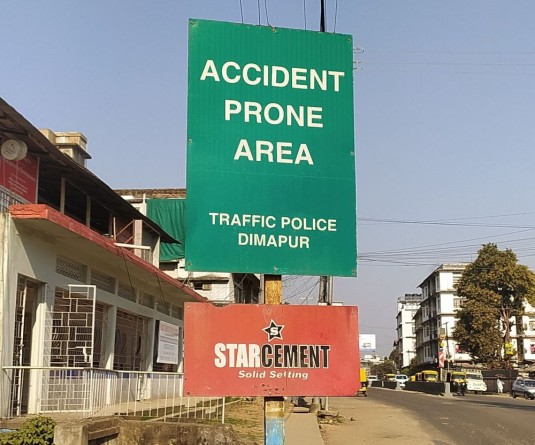
(Morung Express Feature)
The ‘Nagaland Vision 2030’ document was unveiled by Nagaland governor, PB Acharya on December 2016. The document outlines the broad contours of development which the State seeks to undertake over the next decades or so. Over the next few weeks, The Morung Learning will highlight the salient features of different areas of concern and recommendation by the vision document.
In case of education, the ‘Vision 2030’ promises to focus on “quality education with a broad range of formal and non-formal education services.”
Pertinent Issues
• Non-diversity of the nature of courses and programs of study available in colleges in Nagaland.
• Unbalanced landscape of Higher Education in Nagaland - more colleges (46) offering Arts stream as compared to Science stream (09) and Commerce stream (16).
• The Gross Enrolment Ratio (GER) in Higher Education (18-23 years) in the State stands at 15.6 as against 23.6 in India as per AISHE 2014-2015(Provisional).
• The private sector colleges are playing a larger role as providers of undergraduate courses accounting for more than 74.49 percent of the degree courses as compared to Government colleges with 25.51 percent.
• Rapid rise number of students - there were 14790 students in 2008-2009 which rose to 24134 in 2015-2016.
• Most colleges are concentrated in Kohima and Dimapur with 20 colleges in Kohima and 25 colleges in Dimapur, while there are no private colleges in the districts of Zunheboto, Kiphire, Longleng, Phek and Mon.
• Hardly any major national institute that the state or the country can pride itself in.
• Absence of institutes for medical sciences and institutes covering agriculture & allied subjects, engineering, computer sciences, information and technology, management, statistics and so on.
• There is a growing demand for professional courses in recent times. The need for higher and technical education in the State cannot be emphasized enough.
The Education Vision 2030 for Nagaland (Key areas):
• Achieve cent percent literacy by 2023.
• Improving the percentage of children in Class III- V with Class I reading skills from the current 63.4 percent to 100 percent by 2020.
• Improving the percentage of children in Class III- V who can do subtraction from the current 59.8 percent to 100 percent by 2020
• Improving the percentage of children in Class I-II who can read letters, words or more from the current 91.6 percent to 100 percent by 2023
• Improving the percentage of children in Class I-II with Number recognition skills of from the current 92.5 percent to 100 percent by 2023
• Improve the quality of science and mathematics teachers in the State by a Training of Trainers (TOT) method using the services of engineering graduates who serve as teachers in the State.
• Achieve cent percent trained teachers in the State by 2023
• Incorporate modern technologies for teaching and learning in schools. • Introduce accreditation systems for schools.
• Improve, upgrade or reconstruct the infrastructure of all aged schools by 2023.
• Promote the private sector schools with special grants, subsidies and incentives for attention to remote areas
• Visualize new educational system such as the American system as against the present system followed in India.
• E- classrooms and related ICT infrastructure for all schools by 2020-2025.
WAY FORWARD
1. Government of India must establish some iconic National institutions in Nagaland by 2030.
2. The State must take proactive measure to build up technical institutions. Establish medical, engineering, IT and management institutes by 2023. Establish colleges of Forestry, Horticulture and Fishery by 2030.
3. Establish institutes such as Indian Institute of Science Education and Research (IISER) and School of Planning and Architecture (SPA). Promote the private universities such as North Eastern Christian University (NECU), St. Joseph’s University.
4. Make Veterinary College, Jalukie as a National Centre of Excellence for veterinary science.
5. A policy for promotion of private institutions, colleges and universities with premium on technical institutions. Such private sector colleges should be promoted in the more interior districts such as Eastern Nagaland.
6. The State should formulate proper accreditation and quality control policies by 2020.
7. Promoting the potential of Nagaland to attract students from the South East Asian countries is essential.
8. Substantial investment in higher education must be made for fruition of the Vision.
9. NAAC accreditation of all colleges by 2020.
10. Digitization of library and training of all librarians by 2020-2025.
11. E- Classrooms and related ICT infrastructure for all colleges by 2020-2025.
2. Upgradation of Kohima Science College, Jotsoma to the status of Deemed University by 2021.
13. Establish job oriented institutes such as the aviation, maritime and sports institutes along with polytechnics and tool rooms
14. Set up institutes for Bamboo, Bee Keeping, Bio Diversity, Climate Change and Sustainable Development.
15. . Establish centres of excellence in discipline such as IT, Hospitality, Journalism, etc.



